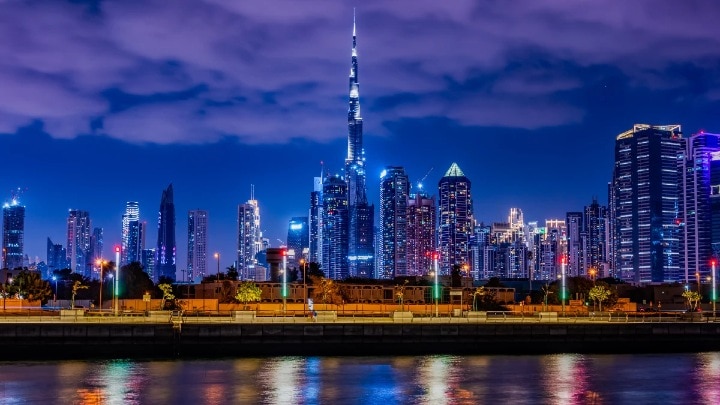9th February, 2022
Why healthy buildings are healthy for the planet, too
Light is a big part of the answer. People have always known that light promotes well-being. Coaxing the sun to return amidst the darkest depths of winter was the point of some of humanity’s most ancient rituals, some of which still persist in some form today.
More recently, connected LED lighting has in important ways rivalled the sun when it comes to promoting human well-being, especially indoors. It certainly represents an epochal advance over the capabilities of conventional lighting.
Consider the human-centric illumination capabilities that a smart lighting system makes possible. Users can program luminaires to change their levels of intensity at certain times of day and in response to daylight conditions, perhaps brightening as dusk approaches on a short winter day. Automation makes the change essentially invisible for occupants, a point that’s as important as it is obvious: People will be aware only that they’re located within a cheerful, emotionally healthy environment, if “aware” is the even right word.
More specifically, users can personalize their lighting by deploying preset scenes appropriate to various tasks. They can use smart lighting systems to support occupants’ circadian rhythms, boosting blue light levels in offices in the morning to promote alertness, and lowering them as the workday ends to ease employees into those restful hours that are so important for holistic health.
In addition, smart lighting solutions minimize flicker, strobe effects, and glare, and provide optimal color visibility and spectral composition. Subtle as they might be, these advantages make people feel better. A lighting system is working most effectively, after all, when nobody notices it.
When outfitted with the proper sensors, smart lighting systems can track occupancy and footfall patterns within a building, identifying high-traffic areas that need enhanced cleaning—an especially crucial concern while the COVID-19 pandemic rages. Businesses can also advise employees in real time which floors or areas of a building they should use, based on workspace capacity and occupancy levels. Smart systems can even predict demand through occupancy trends over time. With an indoor positioning system in place, employees can find and book safe desks and meeting areas via an app, and navigate to their destinations through the least crowded areas.
Sensors embedded in smart lighting systems can pick up data relating to indoor conditions, including temperature, humidity, noise, and air quality. Using that data, managers can optimize conditions for health and well-being. Or they can program the system to do that for them: in a smart building, a lighting system may connect, to the HVAC system, for example, which will respond in real time to the data it’s receiving--or to a window system, which might open ports to let in fresh air.
Then there’s UV-C light. This type of light, provided by special lamps and luminaires, is incredibly powerful for both air and surface disinfection. At a time when building owners are responsible for protecting people from harmful viruses, this technology is proving to be a game-changer.
Lighting is a key component of healthy buildings, which help create healthier people.
And not only healthier people—a healthier planet, too. All too often, ingenious technologies that promote human comfort take a toll on the environment. Smart buildings, equipped with smart lighting, protect the environment as well.
Energy-efficient LED technology can cut lighting-related energy use by up to 80%--a significant number, because 10% to 20% of the energy a building uses typically goes to lighting.
But it’s not only LED light sources that make a difference—it’s also sensor-driven smart systems. When such a system prompts a building to lower its air conditioning in conjunction with the onrush into the premises of a cool breeze through newly opened louvers, it’s bathing occupants in oxygen-rich fresh air—but it’s also taking a step toward sustainability.
The same is true when, in response to strong sunlight, the system dims electrical lighting and opens skylights instead. Or when, based on what motion sensors are telling it, the system turns down the heat in a consistently underpopulated corridor. Or when sensor-bearing luminaires signal in advance to managers when they'll need maintenance, making it possible to avoid the unplanned shutdowns that degrade operational efficiency.
Healthy buildings are good for our minds, good for our bodies, and good for our planet’s long-term future. According to a United Nations Environment Programme report, “Buildings and construction together account for 36% of global final energy use and 39% of energy-related carbon dioxide (CO2) emissions when upstream power generation is included." They account for 40% of the European Union's total energy budget
If those numbers seem discouraging, look at the bright side: by renovating the existing building stock for sustainability, there is much low-hanging fruit to pick and many easy victories to be had. The healthy building is one tool to use as businesses and governments set out to confront the pressing environmental concerns facing the world now. Happily, it will make people feel good, too.
Signify (Euronext: LIGHT) is the world leader in lighting for professionals, consumers and the Internet of Things. Our Philips products, Interact systems and data-enabled services, deliver business value and transform life in homes, buildings and public spaces. In 2023, we had sales of EUR 6.7 billion, approximately 32,000 employees and a presence in over 70 countries. We unlock the extraordinary potential of light for brighter lives and a better world. We have been in the Dow Jones Sustainability World Index since our IPO for seven consecutive years and have achieved the EcoVadis Platinum rating for four consecutive years, placing Signify in the top one percent of companies assessed. News from Signify can be found in the Newsroom, on X, LinkedIn and Instagram. Information for investors is located on the Investor Relations page.


December 17, 2024
Transforming Dubai’s iconic buildings with connected lighting from Signify